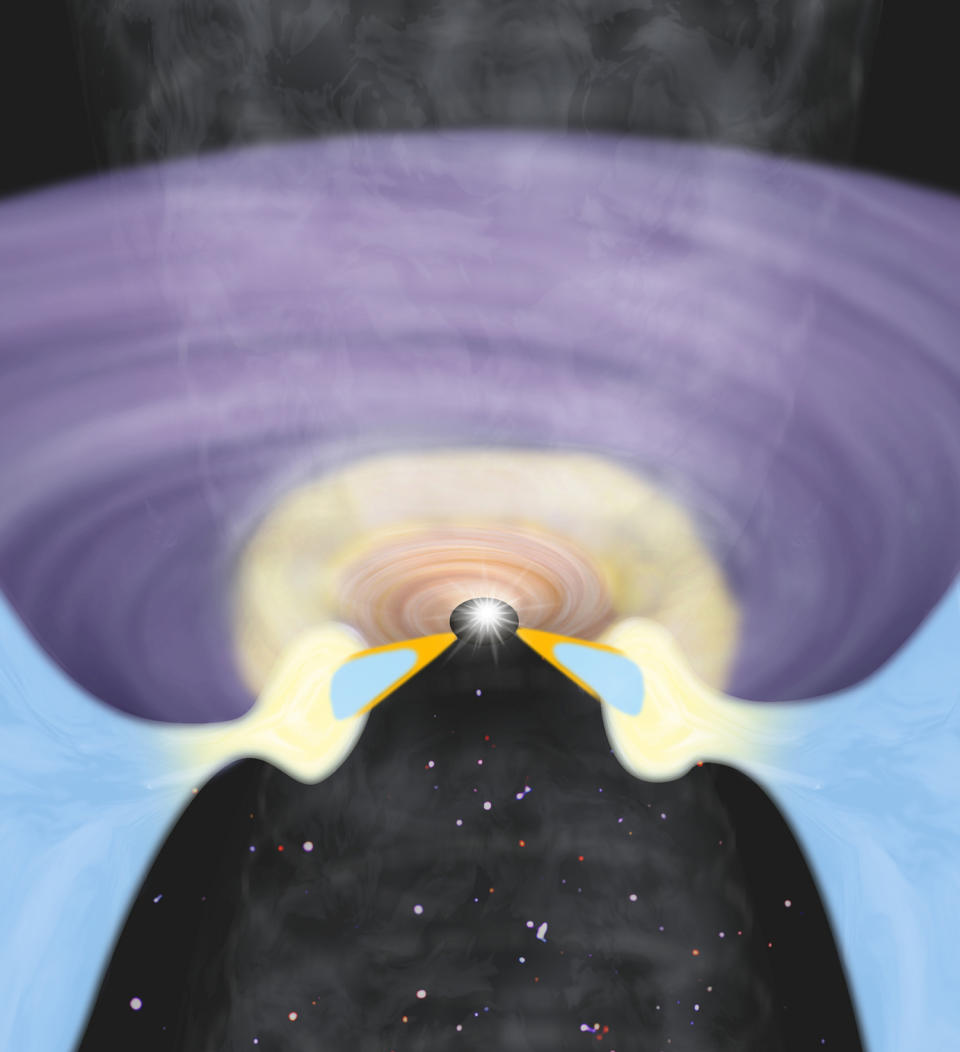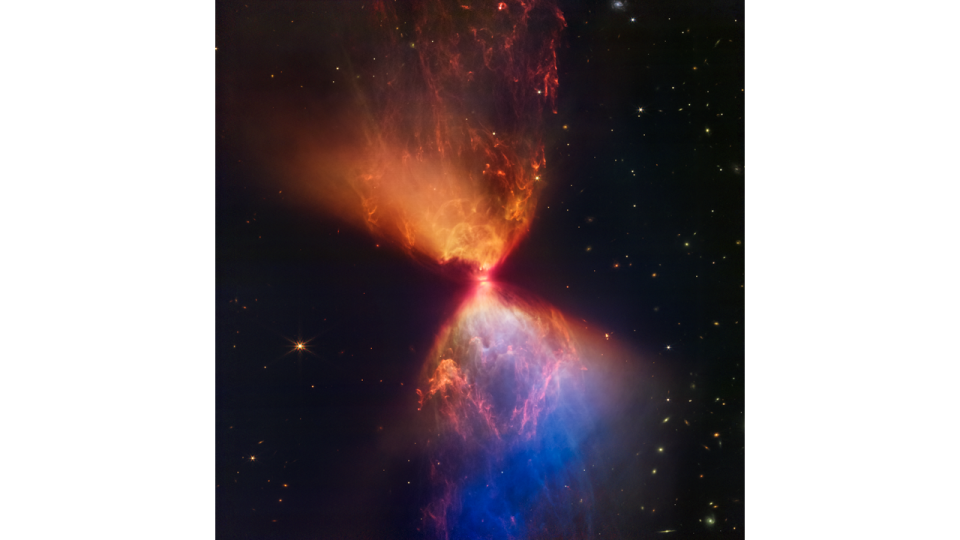Just in time for Independence Day, NASA has released a stunning image from the James Webb Space Telescope (JWST) showing incredible red, white, and blue fireworks exploding across the cosmos.
As the United States celebrates its birthday, that cosmic “rocket’s red glow” is actually the violent explosion of a newborn star at the heart of the blue and white gas and dust cloud, or nebula, that gave birth to it. The nebula in question is called L1527, located about 460 light-years from Earth in the constellation Taurus.
The central “body” of the cosmic butterfly-like nebula is a glowing protostar estimated to be about 100,000 years old. If that seems ancient to you—and it certainly is when compared to the 248-year-old United States—remember that our star, the Sun, and the surrounding Solar System are more than 4.5 billion years old.
In fact, the stellar object at the heart of this nebula isn’t even a full-fledged star yet. These cosmic fireworks mark the process of the protostar evolving into a main-sequence star like the Sun.
The birth of a nation and the birth of a star
Stars are born from vast molecular clouds when extremely dense patches gradually gather more mass and eventually collapse under their own gravity, forming a protostar, which then continues to collect material from the after-birth cloud of gas and dust left over from the molecular cloud that gave birth to it.
This process continues until the pressure and temperature in the core of the protostar reach a mass large enough to cause the hydrogen to fuse into helium.
This is the process responsible for the vast majority of the energy that stars pump out, and it’s also the process that defines what a “main sequence” star is.
Relating to: Forbidden black holes and ancient stars hide in these ‘little red dots’ (image)

The new observation of L1527 and its protostar was conducted by JWST’s Mid-Infrared Instrument. In the image, the white and blue “lobes” extending from the central region are outflows radiating in opposite directions along the protostar’s rotation axis as it consumes gas and dust from its natal cocoon, facilitating its growth.
The outflows cause shock waves in the molecular gas around the protostar, called “bow shocks,” which are similar to the sloping ridges of water a boat would create in Earth’s seas, rivers, and lakes.
These shocked regions glow compared to the dark gas of the rest of the region because the gas there is energized, or “excited,” by these bow shocks. The blue regions represent shocked gas dominated by carbon-based molecules known as polycyclic aromatic hydrocarbons.
At the center of this emerging cosmic butterfly, the JWST image shows a dark streak representing a disk of matter surrounding the protostar and slowly feeding into it.
The central region is white due to occasional “stellar burps” of matter from this feeding infant star. This white glow above and below the central protostar indicates that ionized neon and coarse dust are being ejected away from the diffuse feeding protostar. The red spiky spots around the protostar are an artifact of JWST’s optics.


This isn’t JWST’s first attempt at imaging this baby star and its gaseous bed. In November 2022, the powerful space telescope observed L1527 with its Near-Infrared Camera (NIRCam) instrument. The image is a bit less patriotic than the MIRI version, dominated mostly by orange hues, but the central star remains red-toned and the lower “wing” of this tilted cosmic butterfly is dominated by blue.
As L1527’s protostar continues to age and mature into a main sequence star, it will continue to consume material around it. The growing star will also release energetic jets and radiation that push away much of the rest of this molecular cloud. As a result, most of the structures seen in the MIRI and NIRCam images will disappear.
Once the transformation is complete, this beautiful cosmic butterfly will disappear and the star itself will become much clearer.
RELATED STORIES:
— The iconic Crab Nebula shines in stunning views from the James Webb Space Telescope
— James Webb Space Telescope sees Orion Nebula in stunning new light
— The Hubble Telescope observes baby stars in a cocoon of glowing stars (photo)
JWST used two instruments to observe L1527 in both near-infrared and mid-infrared views, revealing the complexities of the system’s behavior, including how the central protostar affects the surrounding region.
Many more stars are being born in the Taurus molecular cloud complex, a stellar nursery containing hundreds of newly formed stars, where L1527 is located. Its influence could affect the complex and disrupt the wider molecular cloud as it asserts its own independence, preventing other stars from forming.